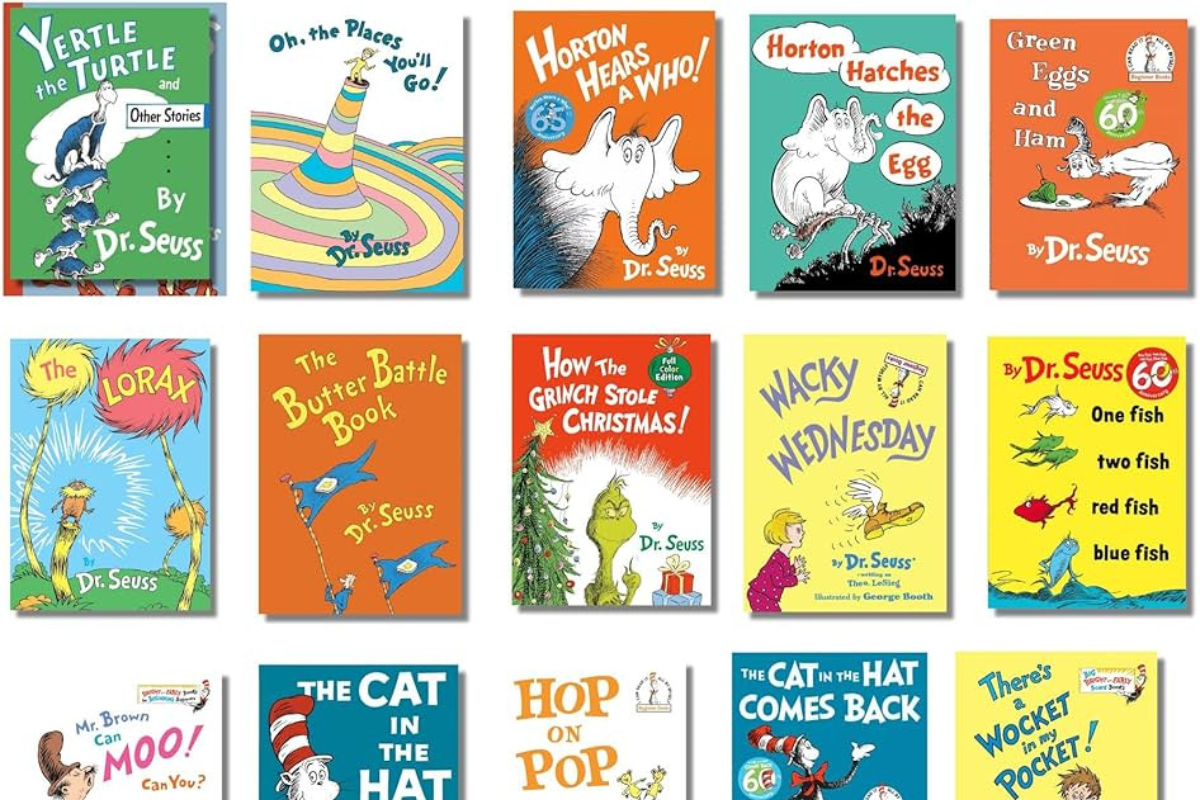Dr. Seuss is one of the most iconic names in children’s literature, known for his unforgettable rhymes and wild, imaginative worlds. As readers flip through books like The Cat in the Hat or Green Eggs and Ham, a common question arises: who brought these quirky characters and colorful scenes to life? Was it Dr. Seuss himself, or did someone else illustrate his books? In this post, we’ll answer that question clearly — and explore the lasting visual legacy behind these beloved stories.
Dr. Seuss Illustrated His Own Books
Yes — Dr. Seuss illustrated almost all of his own books. Born Theodor Seuss Geisel, he was not only a skilled writer but also a trained artist with a background in advertising and editorial cartoons. His dual role as both author and illustrator allowed him to seamlessly blend text and visuals into a uniquely cohesive storytelling experience.
Starting with his first book, And to Think That I Saw It on Mulberry Street (1937), Dr. Seuss handled all aspects of illustration himself. His characters — with their exaggerated features, offbeat proportions, and impossible environments — quickly became his artistic signature. The synergy between his playful language and imaginative drawings is part of what made his books so memorable and enduring.
Understanding His Illustration Style
Dr. Seuss’s illustration style is instantly recognizable — whimsical, exaggerated, and always in motion. His art combined surreal landscapes, oddball characters, and energetic line work, all working in perfect harmony with his rhythmic text. These elements weren’t just decorative; they were essential to the storytelling.
He frequently used:
- Imaginative creatures with made-up names and curious shapes
- Curved lines and tilted perspectives to keep the reader’s eye moving
- Repetition and symmetry to mirror the cadence of the rhymes
His use of bold outlines and limited, high-contrast color palettes (especially in early books) helped make each image pop for young readers. As color printing became more accessible, his illustrations became more vibrant, but always retained their quirky, hand-drawn quality.
Exceptions and Posthumous Works
While Dr. Seuss illustrated the vast majority of his own books, there are a few notable exceptions—mostly involving works published after his death in 1991.
One key example is My Many Colored Days (1996), which was written by Dr. Seuss in 1974 but illustrated posthumously by Steve Johnson and Lou Fancher. The decision to use outside illustrators was intentional and carefully guided to align with Seuss’s original vision, but the art style differs noticeably from his trademark look.
Other posthumous releases, such as What Pet Should I Get? (2015), were based on discovered manuscripts and sketches. In these cases, illustrators worked to remain faithful to his style, often using cleaned-up or adapted versions of his original drawings.
These exceptions are rare. During his lifetime, Seuss maintained full creative control over his books—text and art alike—making his work a true reflection of his singular imagination.
Dr. Seuss’s Artistic Legacy
Dr. Seuss’s impact on children’s book illustration is as profound as his influence on storytelling. His art wasn’t just background — it shaped the tone, rhythm, and emotional impact of every page. His signature look became so iconic that it essentially created its own genre within children’s publishing: whimsical, bold, and slightly off-kilter.
His influence can still be seen in countless modern illustrators who draw inspiration from his playful forms, creative typography, and dynamic compositions. The way he blended surrealism with accessibility gave children permission to dream, imagine, and explore without boundaries.
Even decades after his passing, Dr. Seuss’s style continues to resonate — not just in reprints and adaptations of his own work, but in the tone and art direction of new picture books today.
Need Similar Illustrations for Your Own Book?
If you’re an author working on a whimsical, rhyming, or imagination-driven children’s book and want illustrations that capture that same kind of magic, consider working with a professional illustration studio.
KidsBookArt.com / KidsBookArt LLC specializes in custom children’s book illustrations with a strong understanding of visual storytelling, character design, and style consistency — including the kind of energetic, expressive look inspired by artists like Dr. Seuss.
Whether you need full-page illustrations, cover design, or help preparing your book for print, their team can help bring your vision to life with creative, child-focused visuals. For authors who love the charm of Seussian art but need a professional illustrator to execute it — this is a great place to start.
Conclusion
Dr. Seuss wasn’t just the author of his classic children’s books — he was also their illustrator. Theodor Seuss Geisel crafted both the words and visuals for nearly all his stories, creating a seamless, imaginative experience that captivated generations. His bold lines, bizarre creatures, and rhythmic compositions remain unmatched in their ability to entertain and inspire.
While a few posthumous books involved other illustrators, the signature look and feel of Seuss’s work remains uniquely his own. If you’re working on a book that aims to capture a similar spirit of creativity and visual charm, partnering with professionals like KidsBookArt.com / KidsBookArt LLC can help you turn that vision into a polished, publishable reality.

